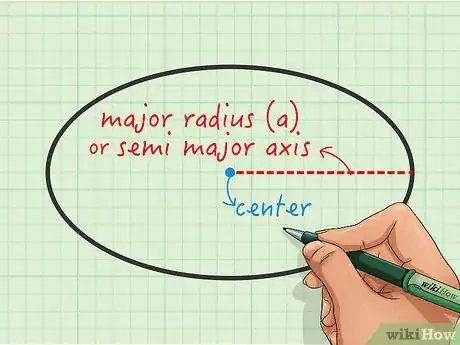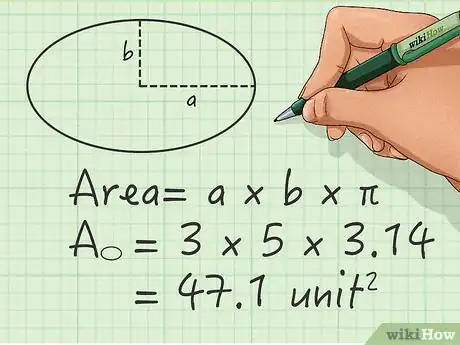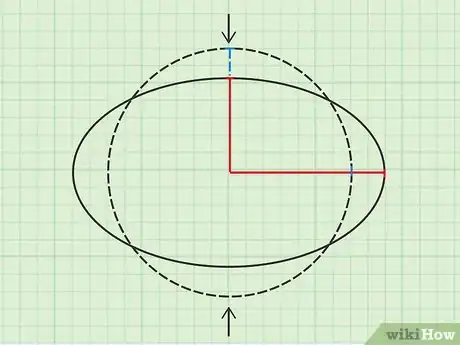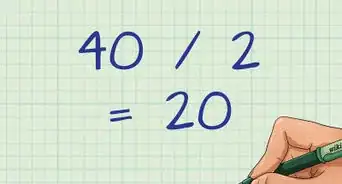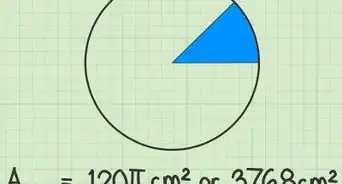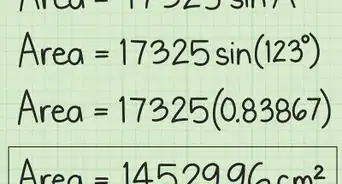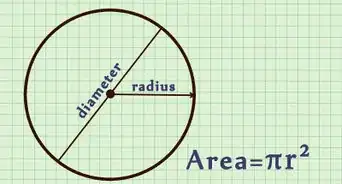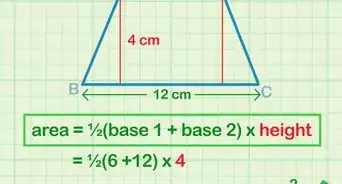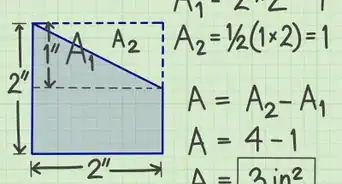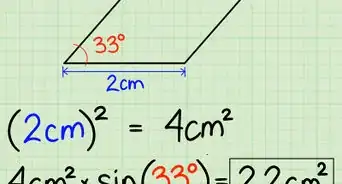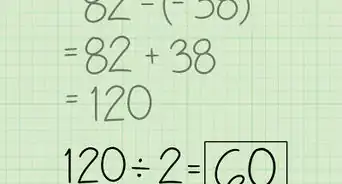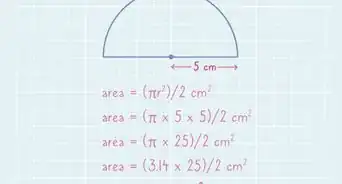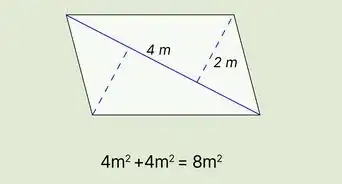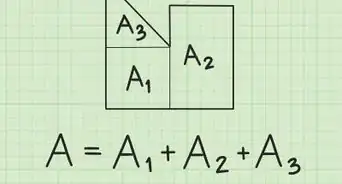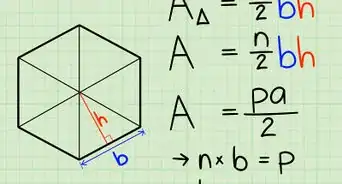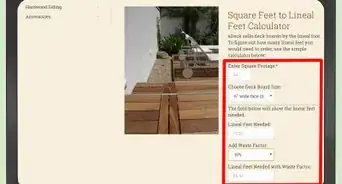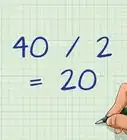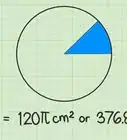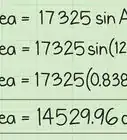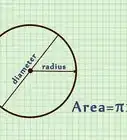This article was co-authored by David Jia. David Jia is an Academic Tutor and the Founder of LA Math Tutoring, a private tutoring company based in Los Angeles, California. With over 10 years of teaching experience, David works with students of all ages and grades in various subjects, as well as college admissions counseling and test preparation for the SAT, ACT, ISEE, and more. After attaining a perfect 800 math score and a 690 English score on the SAT, David was awarded the Dickinson Scholarship from the University of Miami, where he graduated with a Bachelor’s degree in Business Administration. Additionally, David has worked as an instructor for online videos for textbook companies such as Larson Texts, Big Ideas Learning, and Big Ideas Math.
There are 7 references cited in this article, which can be found at the bottom of the page.
wikiHow marks an article as reader-approved once it receives enough positive feedback. This article has 14 testimonials from our readers, earning it our reader-approved status.
This article has been viewed 429,398 times.
An ellipse is a two-dimensional shape that you might've discussed in geometry class that looks like a flat, elongated circle.[1] Calculating the area of an ellipse is easy when you know the measurements of the major radius and minor radius.
Steps
Calculating the Area
-
1Find the major radius of the ellipse. This is the distance from the center of the ellipse to the farthest edge of the ellipse.[2] Think of this as the radius of the "fat" part of the ellipse. Measure it or find it labeled in your diagram. We'll call this value a.
- You can call this the "semi-major axis" instead.[3]
-
2Find the minor radius. As you might have guessed, the minor radius measures the distance from the center to the closest point on the edge.[4] [5] Call this measurement b.
- This is at a 90º right angle to the major radius, but you don't need to measure any angles to solve this problem.
- You can call this the "semi-minor axis."
Advertisement -
3Multiply by pi. The area of the ellipse is a x b x π.[6] Since you're multiplying two units of length together, your answer will be in units squared.[7]
- For example, if an ellipse has a major radius of 5 units and a minor radius of 3 units, the area of the ellipse is 3 x 5 x π, or about 47 square units.
- If you don't have a calculator, or if your calculator doesn't have a π symbol, use "3.14" instead.
Understanding Why it Works
-
1Think of the area of a circle. You might remember that the area of a circle equals πr2, which is the same as π x r x r. What if we tried to find the area of a circle as though it were an ellipse? We would measure the radius in one direction: r. Measure it at right angles: also r. Plug it into the ellipse area formula: π x r x r! As it turns out, a circle is just a specific type of ellipse.[8]
-
2Picture a circle being squashed. Imagine a circle being squeezed into an ellipse shape. As it's squeezed more and more, one radius gets shorter and the other gets longer.[9] The area stays the same, since nothing's leaving the circle. As long as we use both radii in our equation, the "squashing" and the "flattening" will cancel each other out, and we'll still have the right answer.
Calculator, Practice Problems, and Answers
Expert Q&A
-
QuestionHow do I find A and B of an ellipse?
 David JiaDavid Jia is an Academic Tutor and the Founder of LA Math Tutoring, a private tutoring company based in Los Angeles, California. With over 10 years of teaching experience, David works with students of all ages and grades in various subjects, as well as college admissions counseling and test preparation for the SAT, ACT, ISEE, and more. After attaining a perfect 800 math score and a 690 English score on the SAT, David was awarded the Dickinson Scholarship from the University of Miami, where he graduated with a Bachelor’s degree in Business Administration. Additionally, David has worked as an instructor for online videos for textbook companies such as Larson Texts, Big Ideas Learning, and Big Ideas Math.
David JiaDavid Jia is an Academic Tutor and the Founder of LA Math Tutoring, a private tutoring company based in Los Angeles, California. With over 10 years of teaching experience, David works with students of all ages and grades in various subjects, as well as college admissions counseling and test preparation for the SAT, ACT, ISEE, and more. After attaining a perfect 800 math score and a 690 English score on the SAT, David was awarded the Dickinson Scholarship from the University of Miami, where he graduated with a Bachelor’s degree in Business Administration. Additionally, David has worked as an instructor for online videos for textbook companies such as Larson Texts, Big Ideas Learning, and Big Ideas Math.
Academic Tutor To find A, measure from the center of the ellipse to the longest edge. For B, find the length from the center to the shortest edge.
To find A, measure from the center of the ellipse to the longest edge. For B, find the length from the center to the shortest edge. -
QuestionHow do I calculate a half ellipse area?
 Community AnswerSince we know the area of an ellipse is πab, area of half the ellipse will be (πab)/2
Community AnswerSince we know the area of an ellipse is πab, area of half the ellipse will be (πab)/2 -
QuestionWhat is a 3-dimensional ellipse called?
 Community AnswerA 3-dimensional ellipse is called an "ellipsoid."
Community AnswerA 3-dimensional ellipse is called an "ellipsoid."
References
- ↑ https://www.cuemath.com/geometry/ellipse/
- ↑ David Jia. Academic Tutor. Expert Interview. 23 February 2021
- ↑ http://www.mathopenref.com/ellipsesemiaxes.html
- ↑ David Jia. Academic Tutor. Expert Interview. 23 February 2021
- ↑ https://sciencing.com/calculate-area-oval-4760748.html
- ↑ David Jia. Academic Tutor. Expert Interview. 23 February 2021
- ↑ https://sciencing.com/calculate-area-oval-4760748.html
- ↑ http://www.mathopenref.com/coordgeneralellipse.html
- ↑ https://sciencing.com/radius-ellipse-7876699.html
About This Article
Start by writing down the measurement of the major radius, which is the distance from the center of the shape to the farthest side. Then, write down the measurement of the minor radius, which is the distance from the center point to the shortest edge. Next, multiply these two numbers by each other, and multiply that number by pi (π) to get the area. For a more detailed explanation of how this equation works, scroll down!
